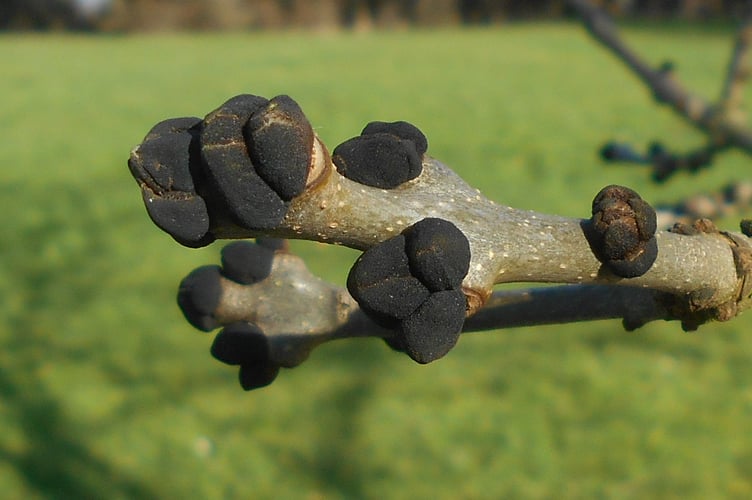ONE of the joys of walking through Exmoor’s deciduous woods is the whole new dimension brought to them once the leaves have fallen.
The colours of the leaves are beautiful in autumn but once they are gone, new vistas are opened up and the trees themselves can emerge in their true shapes.
Most of Exmoor's woodlands are classed as oak woodland, interspersed with mainly beech, birch, ash, sweet chestnut and alder. Under the taller trees is an understorey of woody shrubs such as hazel, blackthorn, hawthorn and spindle.
Forestry workers need to distinguish between the bare trees, as most woodland work is done during the winter. But we can all take pleasure in their variety and beauty, and enjoy getting to recognise the individual species.
How can we learn to identify winter trees? Sometimes the shape will help. Is the tree domed like a lime tree or a beech, or spreading like an oak? The bark of the trunk may be furrowed or cracked, rough or smooth, while the tracery of twigs silhouetted against the winter sky is different for each species of tree.
Winter twigs offer the best clues when trying to identify a tree or shrub. The twigs and suckers of a lime tree (Tilia cordata), for instance, are red or reddish and shiny, with reddish buds.
Each twig zigzags from bud to bud, as do the twigs of the beech tree (Fagus sylvatica). Beech twigs are very slender and elegant with sharply-pointed orange-brown buds.

Another easy tree to identify from its twigs is the ash tree (Fraxinus excelsior). Its twigs are stout and greyish, with black buds arranged in pairs on the twigs. The final bud is pointed, like a bishop’s mitre or a black diamond.
Sycamores, maples and other members of the acer family also have pairs of buds facing each other on the twig. The position of the leaf buds is a great help in distinguishing one species from another. Sycamore (Acer pseudoplatanus) buds are swollen and green, especially at the end of each upswept branch.
This arrangement of buds arranged opposite each other in pairs is more usual in bushy trees such as elder (Sambucus nigra), with its warty, greyish twigs with pairs of purplish buds; blackthorn (Prunus spinosa); spindle (Euonymous Europaeus) and dogwood (Cornus sanguinea).

Blackthorn, which gives us sloes in autumn, has sharp spines on its stiff purplish twigs, which often attract greenish algae. Dogwood twigs are straight, stiff and reddish while spindle twigs stand out because, unusually, they are green.
In contrast, most of our commonest trees have their buds spaced alternately along their twigs, rather than opposite one another. Beech, oak, alder, sweet chestnut, lime, birch, rowan, willows, hawthorn and hazel twigs all have this arrangement.
Oak tree twigs are distinctly bulky, with swollen buds and a cluster of buds near the tip of the twig. The buds are brownish and scaly with greyish, knobbly stems.

We have two species of oak on Exmoor: Sessile oaks and Pendunculate oaks (Quercus petraea and Quercus robur). Their twigs look quite similar. The sessile oaks are more common and usually found in upland areas.
Alder (Alnus glutinosa) only grows near water. Its buds are distinctive, reddish-brown and club-shaped on a short stem. Its purplish catkins also make it easy to distinguish, while last year’s tiny cones often persist too.
Silver birches (Betula pendula) may also have tiny forked catkins on its slender twigs with their pointed buds.

We are all familiar with dangling catkins (Corylus avellana) but for the tree to eventually produce its nuts, the male catkins’ pollen must fertilise the tiny red female flowers almost invisible on the straight, greenish-brown twigs.
Hawthorn (Crataegus monogyna) twigs are spiny and reddish-brown with knobbly brown buds.
We can all enjoy the beauty and variety of our local trees and their twigs. Learning to distinguish them even in winter, can be very rewarding.
For more information about the work of the Exmoor Natural History Society visit www.enhs.org.uk


-by-Tony-Hisgett.jpeg?width=209&height=140&crop=209:145,smart&quality=75)

